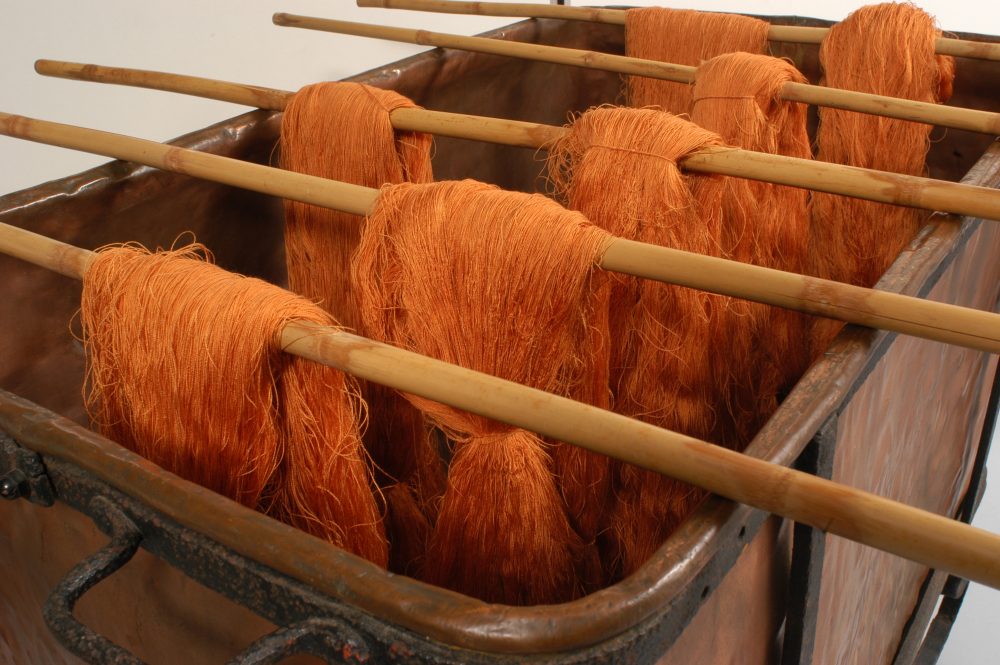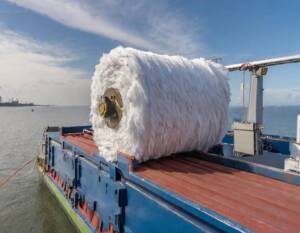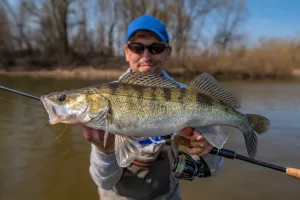
Dope Dyed Yarn
Dope-dyeing, also known as solution dyeing, is a method of dyeing synthetic yarns that involves adding dye to the polymer that a filament will be extruded from. Dope dyeing has major process, quality, and environmental benefits over more conventional dyeing processes.
Some yarns and fabrics like polypropylene and polyethylene are difficult to dye, so dope-dyeing before filament extrusion is the preferred method. The polymer chips are mixed with the master batch, a concentrated dye, before extrusion. The chips and master batch enter a hopper which feeds a heated extrusion cylinder which contains a large screw. As the screw turns, the melting polymer and masterbatch mix and become compressed as they reach the end of the screw. The pressure generated by the screw forces the mix through the spinneret, producing filaments, which can then be further processed into a final yarn. You can read more about the filament production process monofilament multifilament spun yarns.
Dope dyeing is also preferable from an environmental perspective. This dyeing process does not require the dye baths that other dyeing processes require, so resources required for the dyeing process are greatly diminished. You can read about why IKEA has chosen to move to the dope-dyeing process here. In IKEA’s process, dope dyeing required water and chemical usage by 80%, dye consumption by 20%, and electricity usage by 7%.
As the extrusion process with the added master batch is identical to the production of raw filaments, the direct cost of adding colour is much lower. One difficulty with the dope-dyeing process is that the extrusion equipment must be cleaned thoroughly between colours, meaning that the minimum production quantities to be economically viable are large, and the time taken to switch dyes can take time.
A non-exhaustive list of yarns that can be produced dope-dyed include polyester, nylon, polypropylene, polyethylene, viscose, meta-aramid, para-aramid and polyethylene terephthalate (PET).
Fibre Dyeing
Fibre dyeing is a method of producing a dyed yarn or textile by dyeing the fibre before it is spun into a yarn. The loose bale of fibres is put into a press, which compacts fibres into a high density ‘cake’. This ‘cake’ is transported into the dyeing vessel where the dyes are applied. From here, the dense cake is removed to be broken up.
A centrifuge is then used to remove water from the fibres, to speed up the drying process. The centrifuge can work continuously, or in batches. If in batches, the centrifuge spins the fibre ‘cake’ before it is broken up. Once this has been done, the fibres are moved to a dryer to remove all excess moisture. The fibres can then be spun as normal to produce a yarn. You can read more about the yarn spinning process monofilament multifilament spun yarns.
Yarn Dyeing
Yarn dyeing can be done through two methods; package dyeing and hank dyeing, which is also known as skein dyeing. Skein/hank dyeing is the dyeing of loosely wound yarn, which is placed into a vat of dye. Package dyeing involves winding the yarn tightly onto a perforated, which is placed into a vat of dye with several other cones of yarn. Package dyeing is more economical and efficient, as the same sized dye vat can be used by multiple yarns at once. While package dyeing is more economical and efficient, skein/hank dyeing leaves a softer finish to the yarn, as the yarn is not placed under tension.
Since yarn dyeing may be done in much smaller batches than dope dyeing or fibre dyeing, it offers greater flexibility than other methods of dyeing.
SageZander can provide many types of dyed yarns. If you are looking for dyed yarns, SageZander can help. Contact us on +44 (0)1260295264 and sales@sagezander.com


